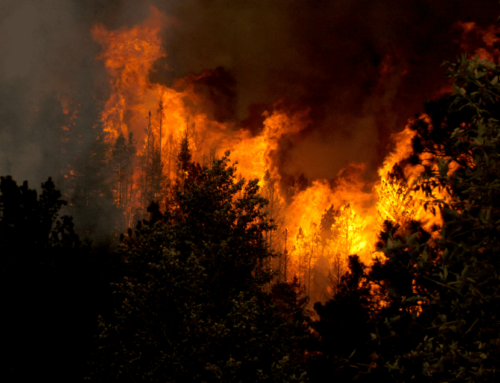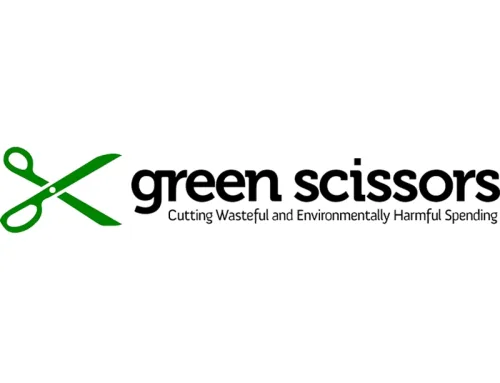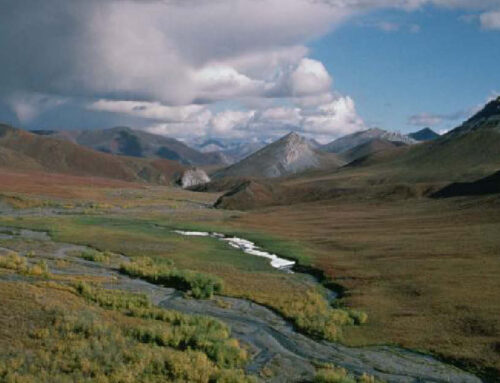ANWR FAQ
Big Questions about the Oil & Gas Lease Sale in the Arctic National Wildlife Refuge
FAQ about the January 6 lease sale and what revenue taxpayers are likely to get, or not get
UPDATE - Jan. 7, 2021:
The Department of the Interior announced the results of the ANWR lease sale as planned on Jan 6th, which were as disappointing as expected. Analysis of the results is available here. TCS Statement on the lease sale is available here.
ORIGINAL POST - Dec. 24, 2020:
On Jan 6th, the Department of the Interior will offer 22 parcels, approximately 1 million acres, located on the Coastal Plain of the Arctic National Wildlife Refuge for lease to oil and gas interests. Sealed bids for the parcels need to be received by Dec 31st , and will be opened during the live auction. The public will be able to watch at www.blm.gov/live.
The lease sale is one of two that were authorized in the 2017 Tax Bill which opened up the Coastal Plain, or “1002 Area,” of the Refuge for oil and gas development. The sale and any subsequent development will be managed by the Bureau of Land Management.
We’ve had lots of questions about the lease sale from the start. Many of our questions remain. Below are a few and our latest best guesses.
TCS Resources for More Information
Report – Drilling in the Arctic: Broken Revenue Promises in ANWR
Recent Quick Take – The Trump Administration’s Mad Dash to Open up the Arctic to Drilling
Latest Statement – Fast-tracking lease sales in the Arctic Refuge
Other Resources
Bureau of Land Management – Coastal Plain Leasing Home Page
Bureau of Land Management – Coastal Plain Leasing Record of Decision and other documents
FAQ
There are 22 parcels covering 1,089,053 acres on offer in the lease sale (see map). The parcels range in size from 23,400 acres to 59,400 acres.
Interested parties will submit separate sealed bids for each parcel. The minimum bid is $25/acre for each parcel.
Typically, the highest bid from a qualified bidder wins the lease to the parcel, but the Bureau of Land Management is not required to accept a bid. Bidders who tie for the same parcel will get the opportunity to submit additional bids that will be opened two weeks after the original sale.
Before the Bureau issues a lease, the winning bidder (assuming they meet all other requirements) must pay the entire bonus bid, the filing fee of $170/parcel and first year’s rent for the parcel, which is set at $10/acre.
Half of all revenues from the lease sale (and any later production) are shared with the State of Alaska. E.g.) If bid revenues total $20 million, federal taxpayers only get $10 million.
The Senate Energy and Natural Resources Committee included leasing in the ANWR Coastal Plain as a way to generate $1 billion in revenue in response to budget reconciliation instructions in the FY2018 budget resolution. It was ostensibly included as an offset for the $1.9 trillion dollar tax bill.
When the leasing authorization eventually passed as part of the 2017 Tax Bill (P.L. 115-97 §20001), the Congressional Budget Office estimated it would raise $910 million. That reflects only the federal portion of receipts, meaning they expected the two lease sales to generate $1.82 billion total in revenue over 10 years.
11 of the 22 parcels in the January auction are in the area with high hydrocarbon (aka, oil and gas) potential, according to the Bureau of Land Management. If we assume all 11 get above-average bids of $100/acre and everything else gets the minimum bid of $25/acre, the sale still only brings in $69 million in bid revenue, leaving federal taxpayers with just $34 million.
If all 22 parcels get bids, first year’s rent would add an additional $10.9 million in revenue, split between federal taxpayers and Alaska.
The $40 million in federal bid and rental revenue collected under the above scenario is just four percent of what the Congressional Budget Office estimated from both sales. But that represents the high-end of realistic revenue expected from the sale (see next question for more detail).
The Congressional Budget Office noted that its final estimate of $910 million in federal revenue from leasing the Coastal Plain (with another $910 million going to Alaska) was based on conversations with industry officials and the results of auctions for high-value oil and gas leases in the Lower 48.
Put simply, all of the available evidence from the closest comparable lease sales indicates bidding levels won’t approach what would be needed to generate the estimated revenue.
We looked at what oil and gas companies – the same companies likely to bid for ANWR leases – paid to lease land and water immediately adjacent to the Coastal Plain since 1999. Only a dozen parcels were ever sold for more than $30/acre. Only one was sold for more than $100/acre and that was back in 2002. The average for all ANWR-adjacent parcels since 2000 is $24 / acre, which is an order of magnitude less than what would be needed to get to CBO’s estimated revenue.
Arctic operators:
Oil Search
Regenerate Alaska
- Holds several state leases on the Western border of ANWR
ConocoPhillips
- Has some interest in state leases adjacent to ANWR
Hilcorp
Exxon Mobil
- Has some interest in state leases adjacent to ANWR
Others:
Daniel Donkel
- Holds several state leases adjacent to ANWR in the Beaufort Sea.
- Listed address is in Florida.
Samuel Cade
J Andrew Bachner
Alaska LLC
CAELUS
Kaktovik Iñupiat Corporation (KIC)
The state of Alaska’s economic development corporation, the Alaska Industrial Development and Export Authority, voted on December 23 to authorize its director to bid up to $20 million in the lease sale.
This could drive down private oil and gas interests because the state could use its position to outbid others and then sell leases to a company for a song.
- i.e. Because Alaska gets half of the receipts, their bids are essentially 50% off.
But it would be terrible for Alaska taxpayers – why pay millions of dollars in bids and rent on behalf of companies who don’t demonstrated any interest in the area and might want to drill for oil and gas later?
Oil markets are recovering after cratering in the Spring, but prices are expected to remain low for years making the prospect for high bidding in the sale less likely.
Estimates of potential reserves in the 1002 Area are highly uncertain, but the mean estimate reported by the Bureau of Land Management relies on a price of $70 per barrel ($2018). The U.S. Energy Information Administration forecasts benchmark petroleum prices will not reach that level until 2030. Aggressive development of the Coast Plain does not seem likely in the near-term, making the chance of a highly competitive lease sale very slim.
Many in the industry have tightened their belt in response to the recent downturn, cutting spending for finding and developing new reserves. By May 2020, oil and gas companies’ capital expenditures had reportedly fallen by more than $85 billion. I.e. there’s less money to spend on leasing.
There is evidence that spills are likely if development proceeds in the Coastal Plain. In a 2018 study, the BLM noted in the nearby NPR-A that small spills “are inevitable.” In the inaccessible, extreme climate of the Coastal Plain, clean-up would be difficult and costly.
The US Energy Information Administration estimated that a total mean of approximately 3.4 billion barrels of oil could be produced in the Arctic Refuge by 2050.
Using one Energy Information Administration projection of potential oil produced from the Coastal Plain and the Bureau of Land Management’s spill rates for NPR-A development, there would likely be 8+ medium spills between 2,100 to 36,000 barrels.
The reality is that developing in the region is high risk and costly, which is why many major banks and other financial interests have steered away from developing in the area.
Additional Background Questions Answered
Sec. 20001 of the 2017 Tax Act (P.L. 115-97) authorized a federal program to manage the “leasing, development, production, and transportation of oil and gas in and from the Coastal Plain,” of ANWR.
Specifically, the tax bill required the Bureau of Land Management to hold two lease sales within seven years of enactment, each of which with at least 400,000 acres up for auction.
The bill stipulated that no more than 2,000 acres of surface development could be allowed throughout all stages of production.
The National Petroleum Reserve in Alaska (NPR-A) is a roughly 23 million-acre area located along the western third of Alaska’s Arctic coast, known as the North Slope. It was originally created by President Harding as an emergency reserve of producible petroleum for the U.S. Navy but it has been managed by the Bureau of Land Management since the 1970s.
ANWR is also on Alaska’s North Slope, though on the far eastern edge, bordering Canada. Alaska state land separates ANWR and the NPR-A. Unlike the NPR-A, ANWR was founded to protect wildlife and wilderness. It is managed by the U.S. Fish & Wildlife Service and is home to a great diversity of animal species.
As required by the 2017 Tax Act, the ANWR Coastal Plain leasing will be managed under the same rules as NPR-A leasing and development.
Related Posts
Most Read
Recent Content
Letter
Apr 16, 2025 | 14 min read
Stay up to date on our work.
Sign up for our newsletter.
"*" indicates required fields












Get Social